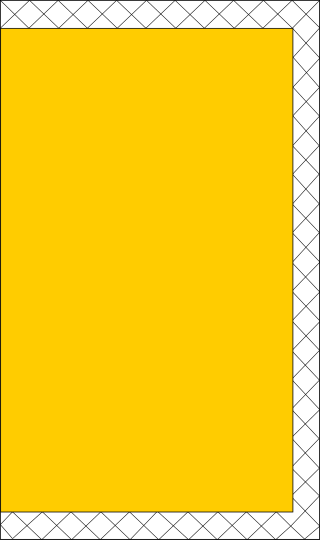
Al-ʻUzzā was one of the three chief goddesses of Arabian religion in pre-Islamic times and she was worshipped by the pre-Islamic Arabs along with al-Lāt and Manāt. A stone cube at Nakhla was held sacred as part of her cult. She is mentioned in Qur'an 53:19 as being one of the goddesses who people worshipped.

Manāt was a pre-Islamic Arabian goddess worshipped in the Arabian Peninsula before the rise of Islam and the Islamic prophet Muhammad in the 6/7th century. She was among Mecca's three chief goddesses, alongside her sisters, Allat and Al-‘Uzzá, and among them, she was the original and the oldest.
Wadd is a pre-Islamic Arabian god. He was the national god of the Minaeans of South Arabia, Yemen, associated with snakes. He is also called Waddum.
The Banu Makhzum was one of the wealthy clans of the Quraysh. They are regarded as being among the three most powerful and influential clans in Mecca before the advent of Islam, the other two being the Banu Hashim and the Banu Umayya.
The Banu Kalb was an Arab tribe which mainly dwelt in the desert and steppe of northwestern Arabia and central Syria. It was involved in the tribal politics of the Byzantine Empire's eastern frontiers, possibly as early as the 4th century. By the 6th century, the Kalb had largely adopted Christianity and came under the authority of the Ghassanids, leaders of the Byzantines' Arab allies. During the lifetime of the Islamic prophet Muhammad, a few of his close companions were Kalbites, most prominently Zayd ibn Haritha and Dihya, but the bulk of the tribe remained Christian at the time of Muhammad's death in 632. They began converting in large numbers when the Muslims made significant progress in the conquest of Byzantine Syria, in which the Kalb stayed neutral. As a massive nomadic tribe with considerable military experience, the Kalb was sought as a key ally by the Muslim state. The leading clans of the Kalb forged marital ties with the Umayyad family, and the tribe became the military foundation of the Syria-based Umayyad Caliphate (661–750) from the reign of Mu'awiya I to the early reign of Abd al-Malik.

Dumat al-Jandal, also known as Al-Jawf or Al-Jouf, which refers to Wadi Sirhan, is an ancient city of ruins and the historical capital of the Al Jawf Province, today in northwestern Saudi Arabia. It is located 37 km from Sakakah.
Khalid ibn al-Walid ibn al-Mughira al-Makhzumi was a 7th-century Arab military commander. He initially headed campaigns against Muhammad on behalf of the Quraysh. He later became a Muslim and spent the remainder of his career in service to Muhammad and the first two Rashidun caliphs: Abu Bakr and Umar. Khalid played the leading command roles in the Ridda Wars against rebel tribes in Arabia in 632–633, the initial campaigns in Sasanian Iraq in 633–634, and the conquest of Byzantine Syria in 634–638.
The early Muslim–Meccan conflict refer to a series of raids in which the Islamic prophet Muhammad and his companions participated. The raids were generally offensive and carried out to gather intelligence or seize the trade goods of caravans financed by the Mushrik of the Quraysh. His followers were also impoverished. The raids were intended to harm the economy and in turn the offensive capabilities of Mecca by Muhammad. The Muslims felt that the raids were justified in that the items being sold in the caravans were their own items, stolen by the Meccans when they had fled to Medina.
Al-Walid ibn al-Mughira al-Makhzumi was the chief of the Banu Makhzum clan of the Quraysh tribe.

The expedition of Zayd ibn Harithah in Hisma took place in October 628, i.e. the 6th month of AH 7 of the Islamic calendar. The attack led by Zayd ibn Harithah was a response to Dihyah bin Khalifa Kalbi's call for help, after being attacked by robbers. Muslims retaliated and killed many of the robbers and captured 100 tribe members.
The expedition of ‘Abd al-Rahman ibn ‘Awf, also known as the Second Expedition of Dumatul Jandal took place in December, 627AD, 8th(Sha'ban) month of 6AH of the Islamic calendar. ‘Abd al-Rahman ibn ‘Awf was sent on a Mission to win over the Banu Kalb tribe and get them to adopt Islam and side with the Muslims, this operation was carried out successfully.
The expedition of Khalid ibn al-Walid to Nakhla took place in January 630 AD, 8AH, in the 9th month of the Islamic Calendar.
The raid of Amr ibn al-As, to Ruhat, took place in January 630 AD, 8AH, 9th month, of the Islamic Calendar.
Raid of Sa'd ibn Zaid al-Ashhali, took place in January 630 AD, 8AH, 9th month, of the Islamic Calendar, in the vicinity of al-Mushallal. Sa'd ibn Zaid al-Ashhali was sent to demolish the images of the gods worshipped by the polytheist tribes around the area.
Expedition of Khalid ibn al-Walid, to Mecca, against Banu Jadhimah, took place in January 630 AD, 8AH, 9th month, of the Islamic Calendar.
The Expedition of Ukasha bin Al-Mihsan, against the tribes of Udhrah and Baliy, took place in October 630 AD, 9 AH of the Islamic Calendar.
Expedition of Khalid ibn al-Walid, to Dumat Al-Jandal, to attack the Christian Prince of Duma, took place in March 631 AD, 9AH, 11th month of the Islamic Calendar, or October 630 AD according to William Montgomery Watt.
Expedition of Khalid ibn al-Walid, to Najran, took place in 10AH of the Islamic Calendar, Around June 631 AD.
The Demolition of Dhul-Khalasa occurred in April and May 632 CE, in 10 AH of the Islamic calendar. Sources refer to Dhul-Khalasa,, as both a cult image and as a temple, venerated by some Arabian tribes. Muhammad sent his companion Jarir ibn ʿAbdullah al-Bajali, to destroy the image, leaving the shrine surrounding it in ruins.

Banu 'Akk or simply 'Akk, was one of the main pre-Islamic Arab tribes. The tribe inhabited Yemen in the Jahiliyyah.



